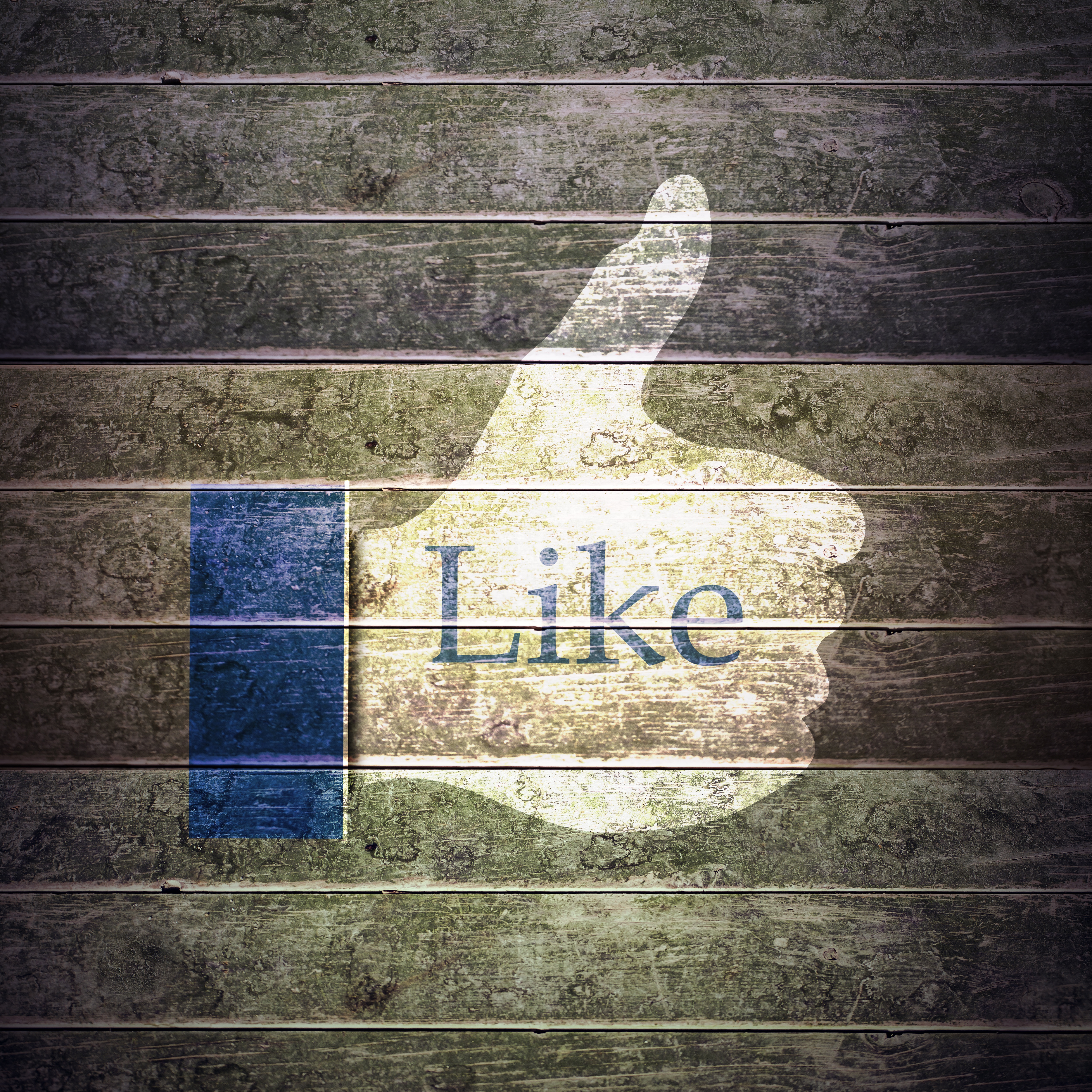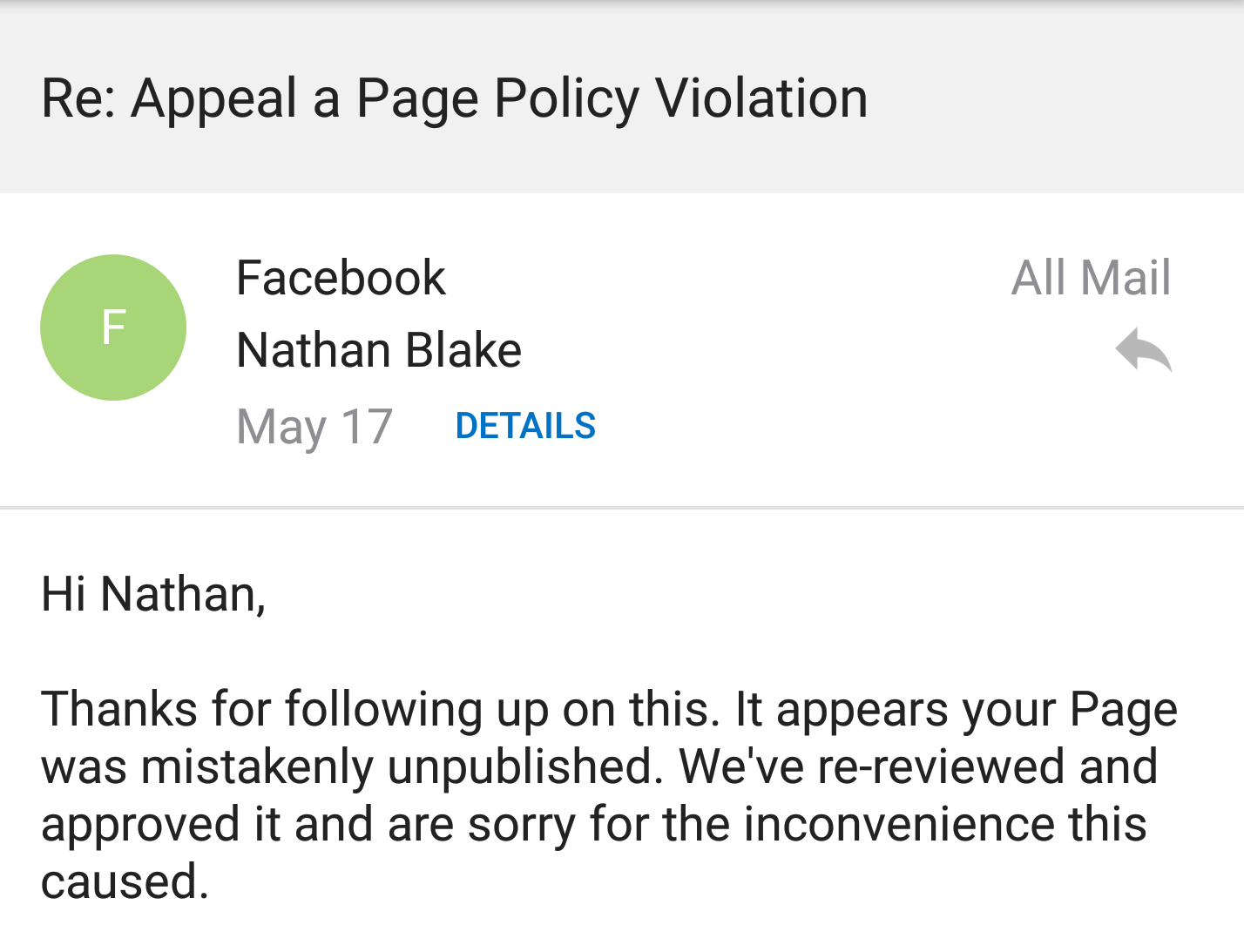There is no feeling quite so hopeless as having your business page unpublished by Facebook.
Sure, I’ve heard the horror stories, but until you experience it for yourself, those stories feel an awful lot like an inbound boogie-man, invented to keep digital marketers awake at night.
On Friday, May 6th, 2016 the Em-Media Facebook page was unpublished for “unsolicited commercial activity (spam)”. The only problem is that we don’t ever spam. We don’t even send out unsolicited messages from Em-Media’s Facebook page. We’ve been around for twenty years. You don’t get there by spamming your followers and brand evangelists.
I tried for two weeks to contact Facebook through any and every outlet and form I could find on the site but with no movement except some canned response and a voicemail that served only to say that Facebook doesn’t take phone calls.
Luckily, I have some extremely gracious industry friends who I’ve formed relationships with over the last few years who sent along our situation to one of their contacts inside of Facebook who was able to review our case and get the page re-published. Without that relationship, I would have had to start over again and lost all of the brand equity that Em-Media had built up over the years. (If you want to know how important social media and networking truly is, it can help you get ahold of Facebook.)
What is the moral of this story? Is Facebook evil and unfair? No, but it does serve to illustrate the current dilemma we find ourselves in as businesses and organizations wanting to leverage the content and connection of the platforms that fit our message and culture.
If it’s not on your website, you don’t own it. You’ll never own it. But you still need it.
 There are three traditional types of platform classifications where you publish your content and digital marketing assets–owned, paid, and earned.
There are three traditional types of platform classifications where you publish your content and digital marketing assets–owned, paid, and earned.
Your owned assets are the most important because you control them.
Social media is often lumped in with our owned assets, and it’s simply not true. In reality, social media is more akin to a rich friend letting you live in their house. Sure, you can have friends over and use the address. They might even like having you around because you offer some sort of value, but at the end of the day, make no mistake, they can put your clothes on the curb anytime they want.
At best, you are renting your social media platforms with the value that you bring by being a part of the community.
Here are 3 things you can do to give yourself a strategic buffer in case things go awry in the social media jungle.
1. Use Social Media to Drive Traffic to Your Website and Other Owned Assets
Save the sand for your vacation home.
In the short term, beaches look great. Strong economies, beautiful locations, and lively communities are huge attractions, but build too close to the beach and between the tides, rising sea levels, and frequent storms, your home won’t last long or could be too costly to maintain.
The same is true for social media. There are so many things that social media can offer your organization that, at this point, not being active on at least two platforms is at best foolish and at worst professional suicide. However, that doesn’t mean you should make social media your primary digital residence or that you should solely rely on it to drive traffic to your website.
It’s too volatile, it changes too frequently, and why in the world would you let someone control your content?
2. Build a Strong Brand Community by Sharing Your Audiences Across Multiple Platforms
On the surface this doesn’t solve our renting problem. However, by having a presence on a minimum of two platforms and giving those distinct audiences strategic opportunities to follow you in another network, you are able to weather an account crisis on one platform by pouring your resources into the other in the short term while you attempt to resolve the issue.
The other ability you gain is the leverage your audience on the remaining platform to tag and raise awareness with the platform in question.
There are more than a few examples of people getting their Facebook page turned back on after activating their audiences and followers on other networks to tag and get the attention of Facebook.
This isn’t the most efficient or effective path, but it is a path.
3. Remember that Social Media is a Human Endeavor
Marketers break platforms. We’ve done it to ourselves because left to our own devices the worst of us turn every platform into the digital marketing equivalent of the guy at the cocktail party that won’t stop flitting around, handing out his business card, or asking to look over your life insurance.
One of the ways that I think you’ll find platforms changing in the future is a move away from business pages and back to the people that actually do the work, especially as the platforms continue to move toward a pay-to-play model with organizations.
While it doesn’t work for every case and company, I am running into an increasing number of situations where I think small and medium sized organizations could better get their message out by utilizing their personal profiles and networks. We’re not talking spamming up the timeline. That’s bad social media marketing. We’re talking about finding the best way to tell your story.
Don’t be afraid to tell your story on your personal profile. There’s a difference between selling and storytelling. Pay to sell. Earn trust with the story.

Ultimately, we were able to get our Facebook page back. Most are not so lucky. We received an apology from Facebook citing a mistake on their end, and besides a 50% drop in our website visits over the last two weeks, we’re no worse for wear.
What we are is wiser and more aware of our channel strategy.
There are lessons to be learned in every failure. There are opportunities in every challenge.

